Potřebujeme váš souhlas k využití jednotlivých dat, aby se vám mimo jiné mohly ukazovat informace týkající se vašich zájmů. Souhlas udělíte kliknutím na tlačítko „OK“.
ASTM E779-10
Standard Test Method for Determining Air Leakage Rate by Fan Pressurization
Automaticky přeložený název:
Standardní zkušební metoda pro stanovení Air Netěsnost ventilátorem přetlaku
NORMA vydána dne 15.1.2010
Informace o normě:
Označení normy: ASTM E779-10
Poznámka: NEPLATNÁ
Datum vydání normy: 15.1.2010
Kód zboží: NS-47963
Počet stran: 11
Přibližná hmotnost: 33 g (0.07 liber)
Země: Americká technická norma
Kategorie: Technické normy ASTM
Kategorie - podobné normy:
Anotace textu normy ASTM E779-10 :
Keywords:
air leakage, air-leakage rates, blower-door test, building envelope, depressurization, energy conservation, fan pressurization testing, infiltration, pressurization, ventilation, Logarithms, Pressurization, Ventilation materials/applications, Infiltration, Leak testing--building constructions/materials, Errors (in derived quantities), Fan pressurization method, Depressurization, Energy conservation, Air leakage testing--building materials/constructions, Building envelopes
Doplňující informace
| Significance and Use | ||||||
|
Air leakage accounts for a significant portion of the thermal space conditioning load. In addition, it affects occupant comfort and indoor air quality. In most commercial or industrial buildings, outdoor air is often introduced by design; however, air leakage is a significant addition to the designed outdoor airflow. In most residential buildings, indoor-outdoor air exchange is attributable primarily to air leakage through cracks and construction joints and is induced by pressure differences due to temperature differences, wind, operation of auxiliary fans (for example, kitchen and bathroom exhausts), and the operation of combustion equipment in the building. The fan-pressurization method is simpler than tracer gas measurements and is intended to characterize the air tightness of the building envelope. It is used to compare the relative air tightness of several similar buildings to identify the leakage sources and rates of leakage from different components of the same building envelope, and to determine the air leakage reduction for individual retrofit measures applied incrementally to an existing building, and to determine ventilation rates when combined with weather and leak location information. |
||||||
| 1. Scope | ||||||
|
1.1 This test method measures air-leakage rates through a building envelope under controlled pressurization and de-pressurization. 1.2 This test method is applicable to small temperature differentials and low-wind pressure differential, therefore strong winds and large indoor-outdoor temperature differentials shall be avoided. 1.3 This test method is intended to quantify the air tightness of a building envelope. This test method does not measure air change rate or air leakage rate under normal weather conditions and building operation. Note 1—See Test Method E741 to directly measure air-change rates using the tracer gas dilution method 1.4 This test method is intended to be used for measuring the air tightness of building envelopes of single-zone buildings. For the purpose of this test method, many multi-zone buildings can be treated as single-zone buildings by opening interior doors or by inducing equal pressures in adjacent zones. 1.5 Only metric SI units of measurement are used in this standard. If a value for measurement is followed by a value in other units in parentheses, the second value may be approximate. The first stated value is the requirement. 1.6 This standard does not purport to address all of the safety concerns, if any, associated with its use. It is the responsibility of the user of this standard to establish appropriate safety and health practices and determine the applicability of regulatory limitations prior to use. For specific hazard statements see Section 7. |
||||||
| 2. Referenced Documents | ||||||
|
Podobné normy:
Historická
1.8.2011
Historická
1.4.2012
Historická
1.8.2013
Historická
1.5.2014
Historická
1.10.2013
Historická
1.8.2012
Odebírejte informace o nově vydaných normách ZDARMA:
Chcete pravidelně odebírat informace o nově vycházejících normách z celého světa a to zcela zdarma?
Přihlašte se k odběru. Vše je velice jednoduché a absolutně ZDARMA.
Na výběr máte vydavatele z celého světa.


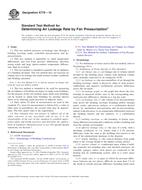
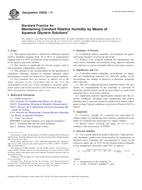 ASTM D5032-11
ASTM D5032-11 ASTM E2320-04(2012)..
ASTM E2320-04(2012)..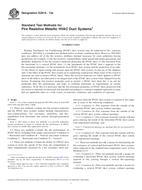 ASTM E2816-13a
ASTM E2816-13a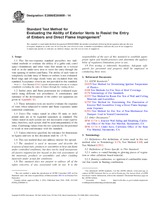 ASTM E2886/E2886M-14..
ASTM E2886/E2886M-14..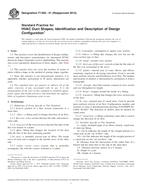 ASTM F1005-91(2013)..
ASTM F1005-91(2013)..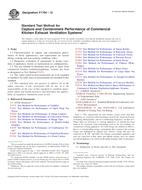 ASTM F1704-12
ASTM F1704-12
 Cookies
Cookies
